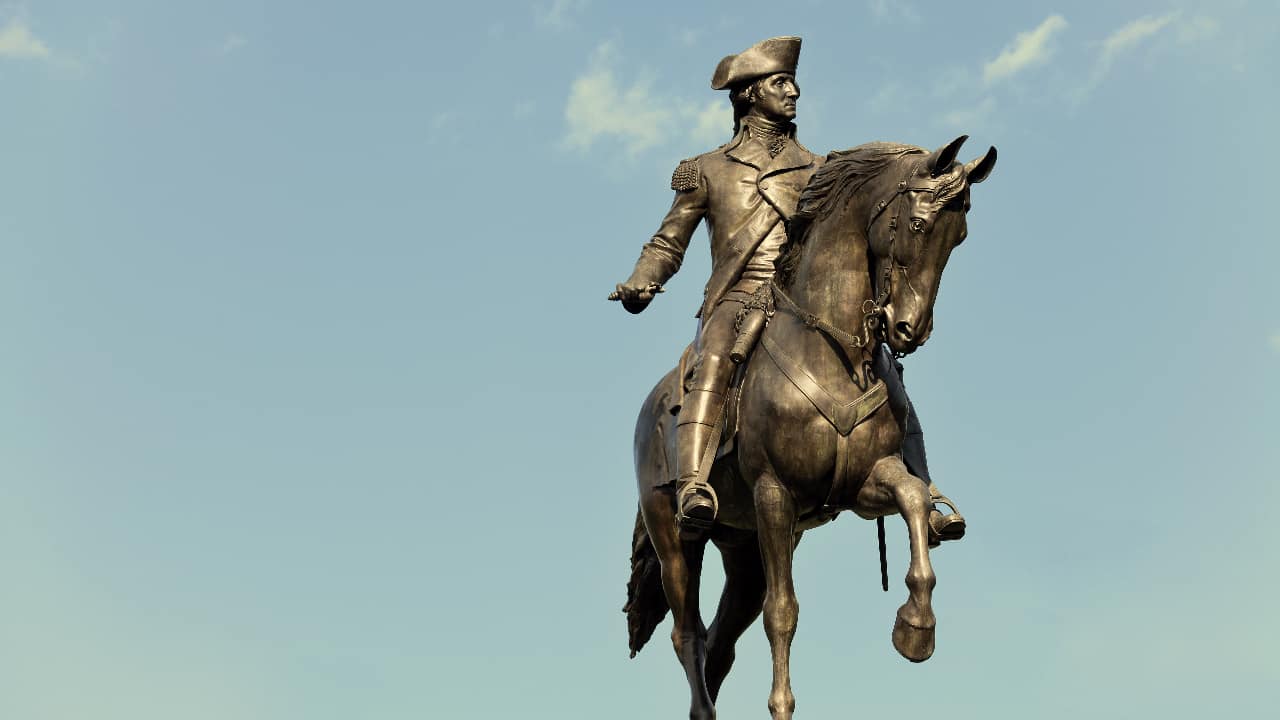The Constitution designates the president as the commander in chief of the “Army and Navy of the United States, and of the Militia of the several States, when called into the actual Service of the United States.” A common view is that this gives the president not only broad but virtually complete and ultimate authority over the armed forces.
But, like so many other modern views of the Constitution, this is false.
University of Virginia James Monroe Distinguished Professor of Law and Miller Center Senior Fellow Saikrishna Bangalore Prakash argues in Deciphering the Commander-in-Chief Clause that this modern perception is at odds with what the Founding Fathers envisioned for the executive’s role over the military.
In stark contrast to the modern view of the executive branch’s military powers as granting the president enormous authority to act unilaterally and without permission, Prakash argues that it was intended to be a highly restricted role. In fact, Prakash asserts that Congress should retain primary control over war powers even after a declaration of war. While the president “commands” the military, he always remains subject to stipulations and limitations the legislative branch might place on him.
“In particular, establishing the Clause’s limits is an acute and persistent problem,” he writes. “We are conditioned to suppose that it grants the President an array of exclusive and extraordinary military powers. To see the Clause in a different light, we must compartmentalize or shunt aside much of what we imagine it to mean. How we read the Commander-in-Chief Clause matters. Without a sense of the Clause’s alpha and omega, Presidents will continue to cite it to evade, minimize, and commandeer congressional powers.”
This matters, because “from James Polk starting a war with Mexico, to Abraham Lincoln suspending habeas corpus, to Barack Obama warring against Moammar Qaddafi and the Libyan government, Presidents and their aides have cited the Commander-in-Chief Clause to justify various military adventures and decisions.”
Prakash relies on a variety of evidence to back his claims. Among them are numerous historical examples, including during the American Revolution. Though commander in chief of the army, George Washington was not the only commander in chief in the war and initially did not have total control over all elements of the Continental Army. Further, Congress often intervened in military affairs, including creating and abolishing officer titles.
“Because the Constitution incorporated a CINC (commander in chief) and contained nothing suggesting a transformation, the Constitution borrowed the prevailing concept,” Prakash writes.
He writes further that when Washington resigned his commission from the Army, the general said he was “bidding an Affectionate farewell to this August body under whose orders [he had] so long acted,” acknowledging that as commander-in-chief, he also submitted to the direction of Congress.
Prakash writes, “’Commander in Chief’ may sound imposing and mighty to our civilian ears. But, as noted earlier, perhaps the phrase signifies something more humdrum than high. Think of ‘commander in chief’ in the context of ‘editor in chief,’ ‘accountant in chief,’ or ‘engineer in chief,’ none of which imply vast powers.”
The president’s role as commander-in-chief was a source of concern among some leading antifederalists during the ratification process. However, at the Virginia Ratifying Convention federalist George Nicholas said that “the regulation of the army and navy is given to Congress. Our representatives will be a power check” to the president.
One potential counterargument is that the president needs broad, if not total, authority in the event of an invasion or insurrection. Prakash emphasizes the distinction between defensive and offensive military operations. During the Quasi-War with France, for example, Congress authorized Pres. John Adams to engage in very limited naval military actions only, suggesting that anything else, such as attacks on France itself, was not thought permissible.
Prior to that, during a war with the Creek and Chickasaw tribes, several state governors requested permission from the president to engage in offensive actions, but Pres. Washington repeatedly insisted that only Congress could give such authority.
At the same time, Washington believed that it was within the Governor’s authority to unilaterally defend themselves when attacked.
“Their conclusion is consistent with the view that, even though Congress had a monopoly on the power to declare war, Executives had an implicit duty to defend territory,” Prakash writes. “Commanders in Chief, officers, and soldiers all have an obligation to defend the United States and may act to fulfill that duty without waiting for express congressional authorization.”
Instead of taking this same approach as Presidents Washington and Adams, Prakash notes that modern presidents have asserted immense power:
Presidents have deployed the Clause to usurp congressional power to declare wars, to thwart laws that regulate and govern the armed forces, and to ignore statutory conditions on the use of military funds. If this Article’s claims are correct, Presidents and their advisers will have to fight on different terrain.
Prakash’s thesis isn’t hard to appreciate when all factors are considered. If the president has broad authority over the armed forces during peacetime and can deploy them however he wants, Congressional power to declare war is, as we have seen since 1941, a moot point. The president can simply deploy troops in a manner that initiates or triggers a retaliatory response resulting in military conflict.
As Prakash himself notes, to wage war is to declare war. Ergo, Congress maintains enormous powers over the armed forces necessary to declare war or avert one.
A Congressional declaration of war authorizes the president to take offensive military action, but even then Congress does not hand over full control to the executive branch. Calling a war waged without a Congressional declaration something else does not make it so.
Some might argue that this interpretation would handicap the president in a way that is not appropriate in a world vastly different from the one when the Constitution was ratified, and this expanded power is necessary to execute the duties of the office effectively.
If that is the case, then the Constitution can always be amended.




